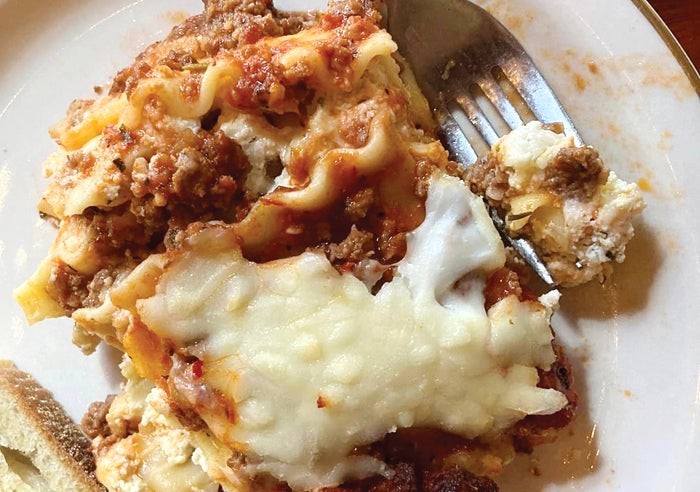Degree column: Setting weight loss goals
Published 12:00 am Tuesday, March 15, 2011
Last weekís column outlined how the Eat Smart, Move More; Weigh Less program works and how to get started. This week, we will set goals for the next 14 weeks. That will include both your short-term goal to lose the weight and your lifetime goal to maintain a healthy weight.
What is a realistic weight loss goal for this program?
One way to estimate realistic weight loss is to expect to lose no more than 2 pounds per week.
Losing 2 pounds per week may be more possible if you are very overweight, but it may not happen for everyone.
Also, men usually have more muscle mass and may lose weight more quickly than women.
It is probably more realistic to expect to lose between 1/2-11/2 pounds per week.
How many pounds are realistic to lose over the course of this program?
Another consideration is that you should not lose more than 10 percent of your body weight over a 6-month period.
For example, if today you weigh 180 pounds, your goal should be to lose no more than 18 pounds in 24 weeks (Note: even though this program is 15 weeks, this calculation still provides a guide to slow weight loss over time. Slower is better!
Think about three things when calculating your number:
1. Your weight loss should be between 1/2 to 2 pounds per week.
2. Your weight loss should be no more than 10 percent of your body weight.
3. You must commit to making changes in your eating and physical activity.
When setting s weight-loss goal we use whatís called a SMART goal approach: Specific, Measureable, Attainable, Realistic and Timely.
A goal that fits in with the smart approach would be: ěI want to lose 10 pounds. by the end of this program.
In addition to having a goal for the number of pounds you want to lose, you may also want to set another goal for other tangible results.
For example:
I want to wear a size 12 dress for my daughterís wedding next year.
I want to be able to walk in the next ěRace for the Cureî race in my town.
I want to be able to play with my grandchildren.
I want to control my diabetes and high blood pressure with diet alone by April.
Personalizing your weight loss in conjunction with a special event that you have coming up or for health reasons are great motivators and may keep you more focused. Once you have set your weight loss goal, please record it at the top of our weekly report card.
Prepare your environment to be successful by conducting a home scan to see if your environment is ready for you to make changes in your eating and physical activity. As we go over these strategies, start thinking about which ones you could do this week.
Do you plan and shop most weeks for healthy meals and snacks for your family?
Do you know whatís for dinner five out of seven nights each week?
Do you involve the kids or other family members in fixing meals and snacks?
Do family members encourage each other to be physically active?
Do family members encourage each other to eat healthy?
Are your pantry and refrigerator stocked with low-fat, low-sugar foods?
Are your pantry and refrigerator stocked with sugar-free drinks, fat-free milk and water?
Are your refrigerator, freezer and pantry stocked with fruits and vegetables?
Do you have healthy snacks, pre-portioned in visible containers in your refrigerator and pantry for you and other family members to grab?
Do you have healthy snacks, pre-portioned in visible containers in your refrigerator and pantry for you and other family members to grab?
If you answered ěnoî to the majority of the questions above, then you need to prepare your environment for the changes that you are about to make in order to ensure your success. Begin with a plan for preparing meals at home; you will be less likely to buy something high-calorie on impulse or get take-out food because you donít have something at home to cook.
Include the children in meal preparation; this will allow them to see how and what they should be eating.
Become more physically active. Replace those high- sugar high-fat snacks and drinks with healthy fresh fruit and vegetables, real fruit juice, and low-fat milk and cheeses. Having healthy snacks available and visible will encourage the entire family to reach for them, especially if those are their only options.
I would also encourage you to find out just how many calories you need based on your age, gender and activity level. Use the chart below to find out that information or visit www.mypyramid.gov/ mypyramid/index.aspx to customize your own daily food plan.
How many calories should you consume each day?
Next week we will re-think our drink options and discuss now beverages can contribute lots of calories to the overall diet. Donít forget to select a strategy to work on for the week, and have a good week.
At the end of our 15 weeks, I would love to hear from those of you that are following the program at home!
For more information about the program, contact Toi N. Degree, family & consumer education agent at 704-216-8970 or by e-mail at toi_degree@ncsu.edu.





